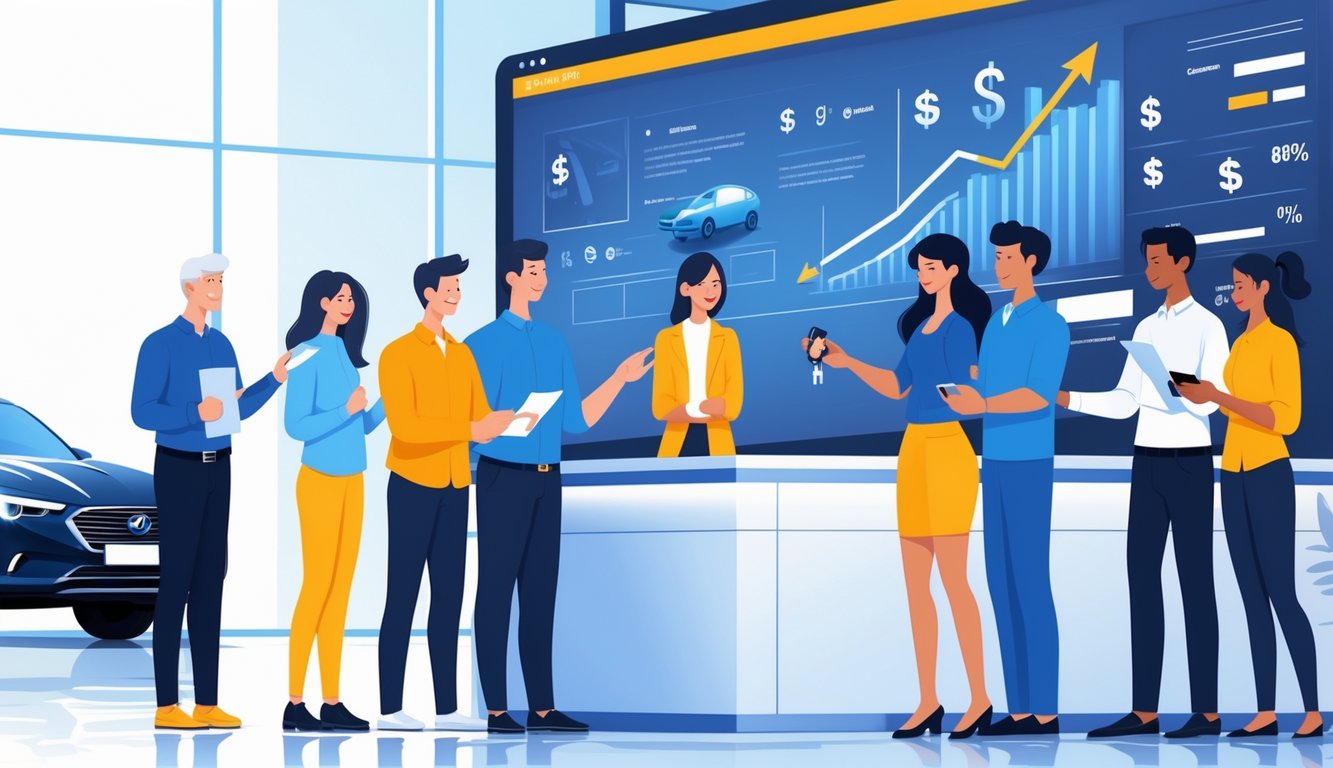
The Role of Credit Score and Credit Reports
So, nobody told me how a car loan hinges on some credit score that feels random until suddenly it’s the only thing anyone cares about. I read all the updates—FICO, VantageScore, whatever—but if you think that stuff just sorts itself out, I want your optimism. Really.
Why Creditworthiness Matters More Now
Overnight, what I owed last year turns into a whole new mess thanks to FICO 10T and VantageScore 4.0. They track your payment habits, accounts you forgot existed, and then Fannie Mae starts talking about “fairer, more accurate” credit reports. Sure. Then why did my dealership hit me with a higher upfront cost than my coworker with the same credit? No clue.
Lenders are running these models nonstop now—like, all day—and they’re pulling in every little detail: payment history, weird “alternative” data, the whole thing. Suddenly your score isn’t just a number, it’s a moving target you share with half the country. The 2025 credit reporting changes make every tiny slip matter. I tried explaining a late payment—nobody cared.
Improving Credit Health Before Financing
Everyone yells “check your credit report!” so I did. All three bureaus. Equifax’s site still makes me want to throw my laptop. Found errors everywhere—old store card, duplicate utility bill, mystery medical debt. I had to fight every item myself. The CFPB changed some rule on medical debt this year, and weirdly, that alone bumped my score more than skipping Starbucks ever did.
I’m not going to pretend “pay down your balances” is some secret. Best move I made? Called an old bank, got a negative mark removed, and finally got my name off my ex’s phone bill. Never hear that in the advice columns. Those “credit builder” cards? They work, but only if you keep the balance low—like, 10% or less. Buy-now-pay-later plans? They’re finally showing up on VantageScore 4.0, so watch out. What worked last year might cost you big this year if you don’t keep up.
Changes in Car Prices and Their Impact
Signing off on a new car loan now? Feels like getting hit by a truck. Average new car price was $50,968 in May 2025. Up 2.1% since last year. Used cars? Still wild. People stare at the sticker like it’s a joke, but nope—those are the real numbers.
How Pricing Trends Affect Your Signoff Costs
Everything’s up. MSRP creeps higher every quarter, so your down payment, taxes, and fees all climb too. I saw new fees for stuff that used to be rolled in—no explanation, just “that’s the market.”
That old “20% down” rule? I always thought it was overkill, but apparently people are actually doing it now because lenders tightened up. So, $50,968 car, you’re dropping $10k just to start, and if your credit’s not perfect, good luck keeping costs down. Longer loans make it worse because cars lose value so fast now.
Strategies for Navigating Higher Car Prices
Everyone’s got advice—buy used, lease, haggle. Who has the time or energy? Insurance is up too, so it’s not just the price—it’s everything. This breakdown lays it out: repairs, taxes, the works. I went to three dealerships in February, and the “loyalty” offers were barely worth the paper.
Math doesn’t help when incentives can’t catch up to prices. Sometimes waiting for end-of-model-year sales helps, but it’s a crapshoot. What actually saved me? Obsessing over every cost—taxes, warranty, resale—while my friends just looked at the monthly payment. Not glamorous, but it saved me from buyer’s remorse.
Trade-In Value and Equity Considerations
Trade-in day is chaos. Paperwork everywhere, loan agent doing that number-tapping thing, and suddenly your “deal” looks nothing like what you expected. Trade-in value and loan payoff? That’s where things get dicey, fast.
Maximizing Your Vehicle’s Trade-In Value
Dealers love to say they’re giving “top dollar.” Sure. Meanwhile, someone’s yelling about dent repair behind you. Dealers flip your trade for profit—they’re not throwing you a party. I always get an online appraisal first (Kelley Blue Book, Edmunds, whatever’s handy). Sometimes they lowball you hard; once I squeezed $1,200 more just by showing another offer. Timing matters too—my car lost value in six months for reasons nobody could explain. Supply chain? Used car inflation? Who knows.
Cleaning out the car, fixing little things—sometimes bumps the offer, sometimes not. Big stuff like body damage? They’ll slash your value instantly. If you’re not underwater, great, but quick fixes almost never pay off. I replaced floor mats once—made no difference, except maybe the sales guy hated coffee stains.
Understanding Equity in Your Current Car
Equity math is weirdly stressful. Trade-in value minus loan payoff = equity. If it’s positive, you get cash for your next car. Negative? You owe more, and the dealer will try to roll it into your new loan. That’s how people end up “upside down” and paying way too much.
Last time I traded in before paying off my loan, the dealer just folded my old debt into the new numbers. Payments shot up. It’s legal, but unless you call your lender for a real payoff amount, you’ll get burned. Prepayment penalties? Still a thing—read the fine print or get blindsided.
Fun fact: new cars usually go negative the second you drive off the lot (see the odds). If your loan is long or your down payment was tiny, it gets ugly fast. No online calculator tells you how it feels to see a second loan on your credit report because you missed a detail.
